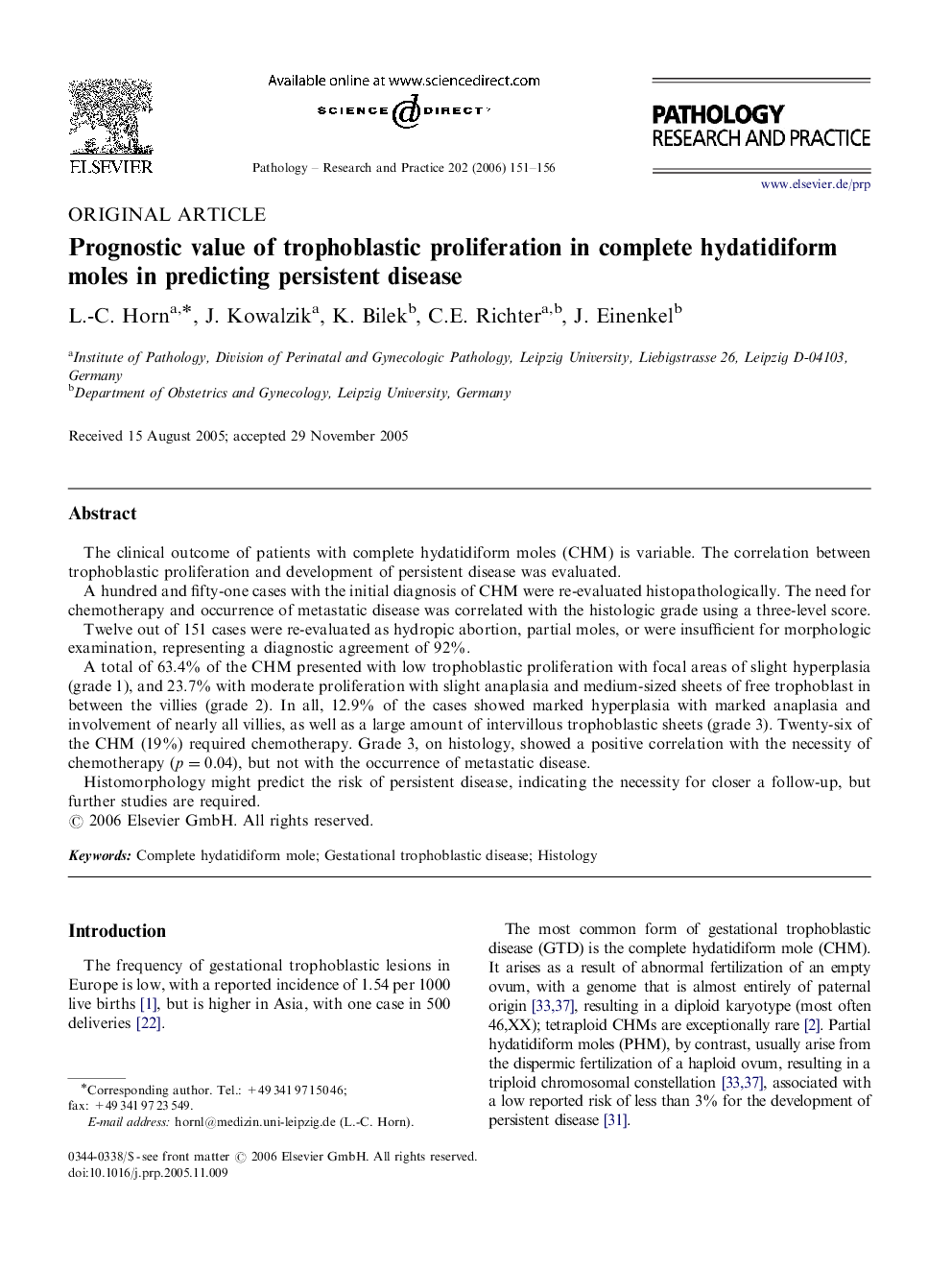| Article ID | Journal | Published Year | Pages | File Type |
|---|---|---|---|---|
| 2156729 | Pathology - Research and Practice | 2006 | 6 Pages |
The clinical outcome of patients with complete hydatidiform moles (CHM) is variable. The correlation between trophoblastic proliferation and development of persistent disease was evaluated.A hundred and fifty-one cases with the initial diagnosis of CHM were re-evaluated histopathologically. The need for chemotherapy and occurrence of metastatic disease was correlated with the histologic grade using a three-level score.Twelve out of 151 cases were re-evaluated as hydropic abortion, partial moles, or were insufficient for morphologic examination, representing a diagnostic agreement of 92%.A total of 63.4% of the CHM presented with low trophoblastic proliferation with focal areas of slight hyperplasia (grade 1), and 23.7% with moderate proliferation with slight anaplasia and medium-sized sheets of free trophoblast in between the villies (grade 2). In all, 12.9% of the cases showed marked hyperplasia with marked anaplasia and involvement of nearly all villies, as well as a large amount of intervillous trophoblastic sheets (grade 3). Twenty-six of the CHM (19%) required chemotherapy. Grade 3, on histology, showed a positive correlation with the necessity of chemotherapy (p=0.04p=0.04), but not with the occurrence of metastatic disease.Histomorphology might predict the risk of persistent disease, indicating the necessity for closer a follow-up, but further studies are required.
